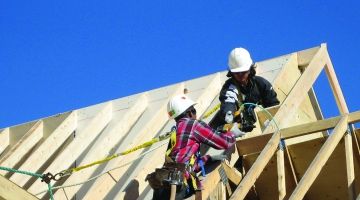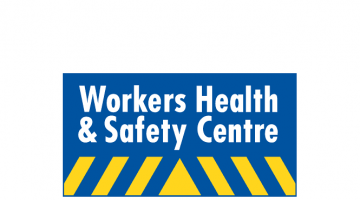Training
IWH research on occupational health and safety (OHS) training focuses on its effectiveness—from the effectiveness of delivery methods and contents to the effectiveness of training programs overall. OHS training, mandated by workplace health and safety laws in jurisdictions across Canada and beyond, is considered an important part of managing workplace hazards and risks. Such training may involve instruction on identifying occupational risks and how to control them, learning about safe workplace practices and how to properly use personal protective equipment.
Featured

At Work article
Safer work practices, lower injury rates maintained two years after Ontario’s working-at-heights training came into effect: study
In 2015, the Ontario government implemented a working-at-heights (WAH) training standard to ramp up fall prevention efforts. An IWH study team has now gathered two additional years of data on the effectiveness of this training requirement—both on work practices and injury rates.
Published: November 3, 2023
Journal article
Journal article
Evaluation of the Ontario mandatory working-at-heights training requirement in construction, 2012 - 2019
Published: American Journal of Public Health, January 2024

Impact case study
IWH evaluation of the effectiveness of the Ontario working-at-heights training standard
An IWH study on the effectiveness of Ontario's mandatory training was helpful to the labour ministry in several ways—including in reinforcing the value of program evaluations.
Published: November 2023
News release
News release
Worker injuries due to falls from heights declined after Ontario made training standardized and mandatory, study finds
Published: November 2023

At Work article
Safer work practices, lower injury rates maintained two years after Ontario’s working-at-heights training came into effect: study
In 2015, the Ontario government implemented a working-at-heights (WAH) training standard to ramp up fall prevention efforts. An IWH study team has now gathered two additional years of data on the effectiveness of this training requirement—both on work practices and injury rates.
Published: November 2023
Project report
Project report
Differing effects of in-person and online methods of delivering JHSC Certification Part 1 Training
The COVID-19 pandemic accelerated the ongoing trend toward online learning in many spheres of life, including occupational health and safety (OHS) training. However, it's not clear whether online delivery methods are as effective as in-person methods. To help address the research gap, a study set out to compare face-to-face learning, online instructor-led synchronous distance learning and online self-paced e-learning training delivery methods. It centers on a provincially regulated standardized OHS training. The main research question asks whether the three training delivery methods differ in the post-training knowledge gain by learners. Secondary research questions are asked about other factors affecting knowledge achievement, other training outcomes, and learner suggestions for improving the training.
Published: September 2023
IWH Speaker Series
IWH Speaker Series
Is in-person training more effective than online training? Findings from a study of Ontario workers
How does in-person training compare with online training when it comes to knowledge gained and learner engagement? Does the effectiveness of the different training methods vary for different types of workers? In this presentation, Dr. Lynda Robson shares findings from a recent study of Ontario workers who took a Joint Health and Safety Committee (JHSC) certification course. She compares the effects of three methods of training—face-to-face training, instructor-led distance training and self-paced e-learning. She also examines the effects of worker characteristics, such as level of formal education and English as a first language, on training outcomes.
Published: September 2023

IWH in the media
Employers struggle to provide newcomers with OHS training, support: IWH study
A reprint of this IWH At Work article was included the February 2023 issue of the OCA's Construction Comment magazine.
Published: Construction Comment: Ottawa Construction Association, February 2023

IWH in the media
Standardized working at heights training improves safety, study
A follow-up study looking at the impact of Ontario’s mandated working at heights training confirms standardized training results in safer work.
Published: Workers Health & Safety Centre, January 2023
IWH Speaker Series
IWH Speaker Series
Preventing falls from heights in construction: a long-term evaluation of Ontario's working-at-heights training standard
In 2015, the province of Ontario implemented a working-at-heights (WAH) training standard requiring most construction workers to take a specific day-long training in fall prevention. A 2019 study conducted by the Institute for Work & Health found the training had positive impact on construction workers' safety knowledge, work practices and injury rates. In this presentation, Dr. Lynda Robson shares new findings on the longer-term impact of the training, drawing on two additional years of follow-up data.
Published: December 2022

IWH in the media
Which is better, online or in-person learning?
As many workplaces moved to online environments during the pandemic, training and development followed suit and many employees took courses in a virtual environment. John Dujay shares results of an Institute for Work & Health review that compares the effectiveness of online training with that of in-person training.
Published: Canadian HR Reporter, August 2022